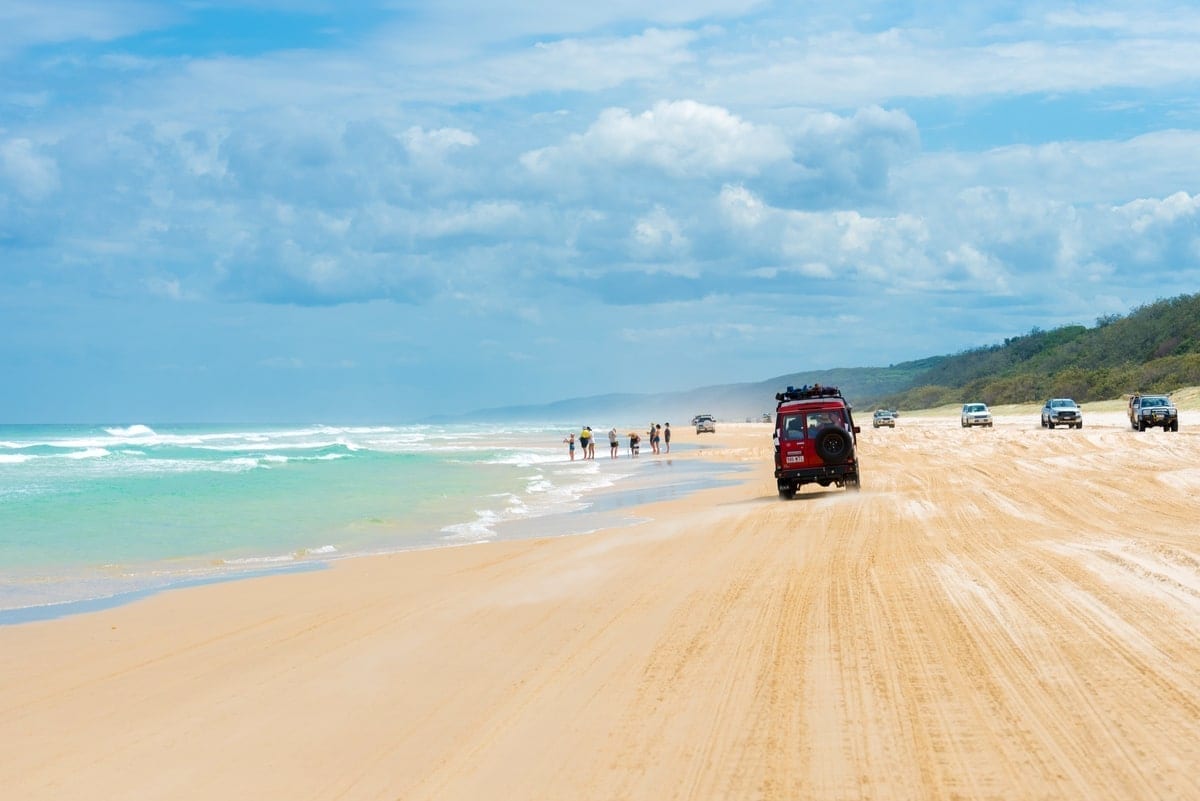Your Go-To Tyre Pressure Guide For Tackling All Terrains
Get the most out of your 4×4 across any terrain with the recommended tyre pressure that keeps you trekking.
If you’re wondering why people always rave on about what’s the best tyre pressure for certain tracks all the time it’s because tyre pressure is arguably what’s going to get you across the line. But how? Why does tyre pressure matter?
It’s fairly simple actually: Reducing tyre pressure will help distribute the weight of your vehicle across a greater surface area, increasing the contact surface between the tyres and the ground. The larger the contact surface, the more traction you’ll have as the tyres mould perfectly to the terrain you’re driving on.
The difficult part? Finding the right amount of tyre pressure. You see, it’s not as simple as recommending you a flat-rate psi. There are too many variables to consider, including vehicle size, overall weight, wheel/tyre combination, driver skill level — not to mention different types of terrain.
In most cases, you’ll have more luck figuring out what’s the best tyre pressure by simply getting out there and experimenting. All you need is a decent quality air compressor, a gauge, and of course some average psi numbers to work with, which we will provide you with down below.
You think we’d just leave you hanging like that?
Choose the right tyre pressure by terrain — PSI guide for off-roading
Tyre pressure for gravel roads and general outback dirt tracks
Most gravel roads are smooth and well maintained. If you’re running at normal speeds, similar to that of on-road, you won’t have to worry too much about tyre pressure.
However, if you notice conditions have changed and the surface begins to deteriorate (if you see washaways), leaving behind large potholes and trenches, you may have to lower your speed to suit conditions.
Lowering your tyre pressure to the following psi’s below can help improve your vehicle’s ride quality, tyre flexibility and overall safety.
- General gravel roads: 35psi
- Rough gravel: 26psi to 32psi
- Jagged rocks: 16psi to 24psi
- Crook gravel roads and tracks: 26psi
Rule of thumb: Avoid using too low pressures as tyres can easily pop off the rim in trenches and large potholes. Same goes for using too high pressures, as tyres become more prone to damage and punctures.
Tyre pressure for dry clay and muddy terrain
Dry in summer, muddy in winter, there’s no denying how fun these types of terrains truly are. There’s nothing like launching your fourbie through a deep muddy track and hoping for the best. Yeah nah. You definitely want to get the right tyre pressure. Always make sure to take extra care when running low tyre pressures as there’s a chance of the tyre slipping off the rim, and mud debeading the rim.
- Cleared muddy tracks: 20psi to 25psi
- Bottomless muddy tracks: 22psi
- General used clay tracks: 20psi to 25psi
- Ruts and rugged: 16psi to 20psi dry and muddy
Rule of thumb: It’s best to navigate muddy tracks straight through the middle as this is where the most traction is. Reason being, someone has most likely gone through and cleared all the mud to the sides, exposing the bottom.
Avoid going through untouched sides as they are likely full of thick mud that will instantly clog your tyre treads and turn them into slicks.
Tyre pressure for rocky terrain
Lowering tyre pressure for rocky terrain means you’ll get more flex as the tyres easily confirm to the ever-changing terrain.
This helps improve traction and reduces the chances of your tyres puncturing from impact. Driving at low speeds with controlled throttle and steering movements, combined with low tyre pressure helps avert the risk of the tyres coming off the rims.
If you notice your vehicle struggling to move, feel more bumps than usual (like it’s that easy to tell when driving on rocks) the pressure is too high.
- Rocky terrain and rock crawling: 16psi to 22psi
Rule of thumb: Avoid going anything lower than 15psi as you run the risk of the tyre rolling off the rim completely.
Tyre pressure for sandy terrain and the beach
Lowering tyre pressure for sand is an absolute must, but at what psi comes a challenge.
Consider the beach, for example, sand is soft, firm, wet and dry — do you maintain the same tyre pressure the whole way? If the sand is soft, which is typically the case, you’ll want to lower the tyre pressure to 16psi, this will ensure you “float” smoothly over the top. If the sand is wet and firm, you can generally get away with 20psi.
- Beach sand: 15psi to 16psi
- Sand dunes: 13psi to 18psi
- General sand tracks: 20psi to 25psi
- Recovery: 6psi to 10psi
Rule of thumb: We recommend that inexperienced drivers do not go any lower than 16psi as you run the risk of debeading your tyre and rolling if you steer/corner too sharply.
Always inspect your vehicle after off-roading
It’s good practice to always check out your vehicle for any damages after a day of tackling off-road tracks. While filling the tyres back up with air quickly inspect the underbody for any obvious signs of wear or damage.
And as usual, always check in with your mechanic for a check-up just to make sure there isn’t anything you might have missed. What could’ve been a simple cheap fix can easily turn into a major problem if it’s not nipped in the bud early.
